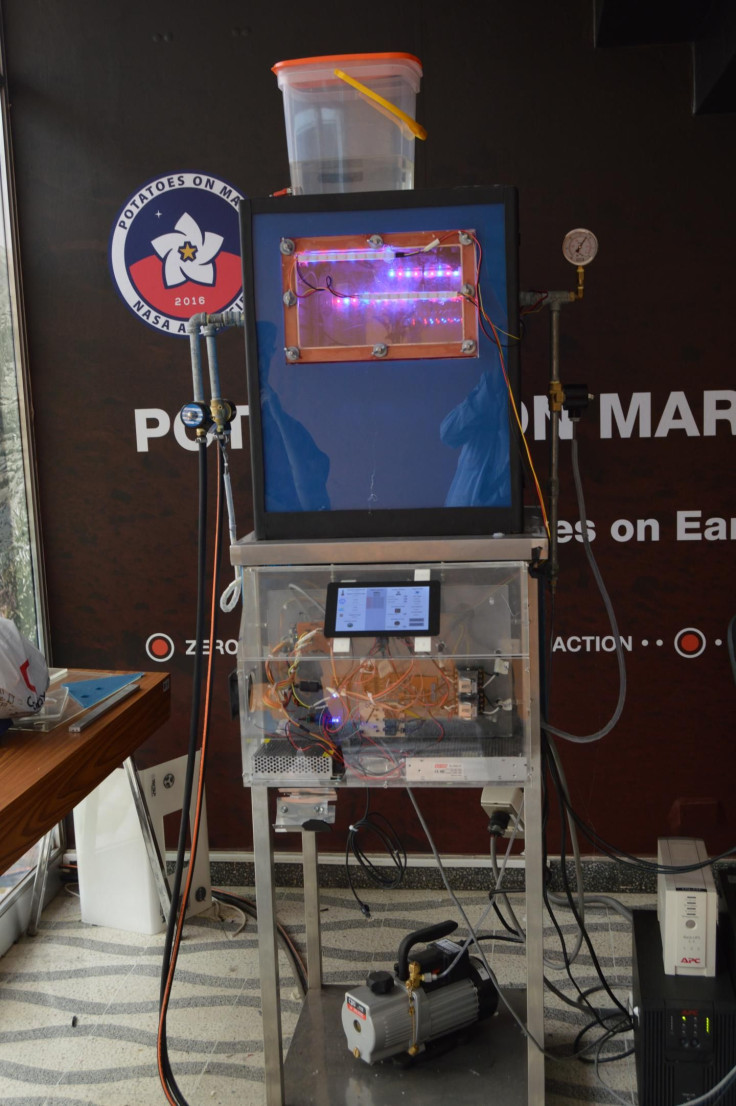Life On Mars: Potatoes Can Grow In Martian Conditions, Research Finds

Among the many other things humans will need if we are to ever colonize Mars, one of the most important is the ability to grow food on the surface of the red planet. Even with the recent finds of water — albeit mostly as solid ice — being present in many places on the planet, it is still a very inhospitable environment for life to be sustained.
That makes an experiment conducted by the Lima-based International Potato Center (CIP) incredibly important. Using a CubeSat to simulate Martian conditions, the experiment is actually meant to prove the viability of growing potatoes in extreme climates on Earth, in a bid to enhance food security. And in preliminary results, it found the versatile vegetable can grow on Mars.
The CubeSat was built by engineers from the University of Engineering and Technology in Lima, and was based on designs provided by NASA. In the hermetically sealed environment of a container, there is soil and the potato, and the CubeSat delivers nutrient-rich water to it while controlling air pressure, oxygen and carbon dioxide levels as well as day and night temperatures to simulate the conditions on Mars. The controlled environment is continually monitored by sensors and the soil is recorded by two live-streaming cameras. Feeds from both are available for public viewing on this website.
“If the crops can tolerate the extreme conditions that we are exposing them to in our CubeSat, they have a good chance to grow on Mars. We will do several rounds of experiments to find out which potato varieties do best. We want to know what the minimum conditions are that a potato needs to survive,” Julio Valdivia-Silva, a research associate with the SETI Institute who has worked at NASA’s Ames Research Center, said in a statement Wednesday.

Potato breeders at CIP found that varieties bred to tolerate abiotic stress and very high salinity performed the best in the experiment, which began Feb. 14, 2016. The soil used was taken from the Pampas de La Joya desert in southern Peru, the place closest to Mars-like conditions on Earth, but was mixed small amounts of fertilized Earth soil for nutrition and structure.
CIP scientists also concluded that future Mars missions hoping to grow potatoes on the red planet will need “to prepare soil with a loose structure and nutrients to allow the tubers to obtain enough air and water to allow it to tuberize.”
The organization is a part of CGIAR (formerly called the Consultative Group for International Agricultural Research), which works toward food security.
© Copyright IBTimes 2025. All rights reserved.




















